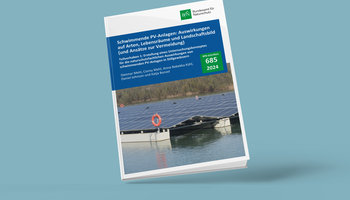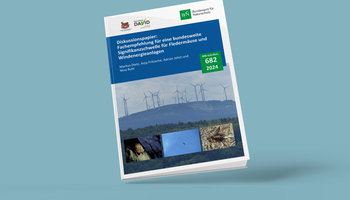Contact
OECOS GmbH
Bellmannstr. 36, 22607 Hamburg
Apl. Prof. Dr. Karsten Runge
Tel.: +4940 89018924
runge(at)avoid-unrequested-mailsoecos.com
Laying high-voltage underground cables (for example HVDC – high-voltage direct current transmission) requires a range of prevention and mitigation measures. The research project develops practical guidelines and recommendations on their detailed implementation. The project will compile a detailed set of measures containing the typical construction-, facility- and operation-related damage mitigation measures. Action sheets will be produced as model templates to ensure the closest possible relation to practice. These sheets can serve as guidance or support for consultants and approval authorities, thus strengthening nature conservation interests and increasing the efficiency and legal compliance of the planning procedures.
The aim of the project is a complete listing of all possible prevention and mitigation measures for (detailed) route planning, laying and recultivation as well as operation of underground cables. The measures are aimed at the technical, structural and land use planning side as well as at the cable-laying works themselves (such as e.g. soil protection, nature conservation controls on the timing of construction and measures to restore special biotopes). Practical guidelines and recommendations will be developed on the specific implementation requirements. The framework conditions on the practicability and effectiveness of prevention and mitigation measures also need to be clarified.
The project will prepare and support the process of establishing the necessary measures in, for example, planning permission decisions. The project will also examine the requirements and options for monitoring success and review the mitigation measures for underground cable projects. A further optimisation factor is the need to establish appropriate guidelines and measures for the effective prevention or reduction of negative effects as early as the previous planning level (federal expert planning and regional planning procedures).
The relevant prevention and minimisation measures will initially be compiled by means of a review of the measures used in practice, based on the sub-statutory regulations, guidelines, expert agreements, specialist literature, practical examples and possibly a supplementary expert questionnaire. Regional differences also need to be pointed out i.e. taken into account.
In order to create a broad knowledge base, the various requirements and framework conditions for implementing the measures will be discussed with representatives from nature conservation authorities and associations, town planners, sectoral ministries and grid operators as part of a working group supporting the project. In addition to a comprehensive presentation of the statutory and technical requirements, action sheets will be produced as models for dealing with projects in practice.

Hinweise und Empfehlungen bei Erdkabelvorhaben
BfN-Skripten 606 (2021)
OECOS GmbH
Bellmannstr. 36, 22607 Hamburg
Apl. Prof. Dr. Karsten Runge
Tel.: +49 40 89018924
runge(at)oecos.com
RiOVG, Sonninstr. 23, 21339 Lüneburg
Prof. Dr. iur. Dr. h.c. Thomas Schomerus,
Tel.: +49 4131 407327
schomerus(at)leuphana.de
Federal Agency for Nature Conservation (BfN)
FG II 4.2 Impact regulation, traffic route planning
Dr. Corinna Rickert
Corinna.Rickert(at)BfN.de
03.04.2024
Weiter

03.04.2024
Weiter

19.03.2024
Weiter
